Address invited four leading Berlin based creatives to discuss what time, fashion and trends mean to them during SEEK spring/summer 2015 trade show. The panel included Christiane Bördner, Editor in Chief of I Love You magazine and art director for creative consultancy, The Gaabs; Mary Scherpe, the woman behind influential website, Stil in Berlin; Herbert Hofmann, the creative director of Berlin based concept store, Voo; and freelance journalist and social media expert Mirna Funk. The discussion took place in Berlin in July 2014 and was moderated by Address editor Johannes Reponen.
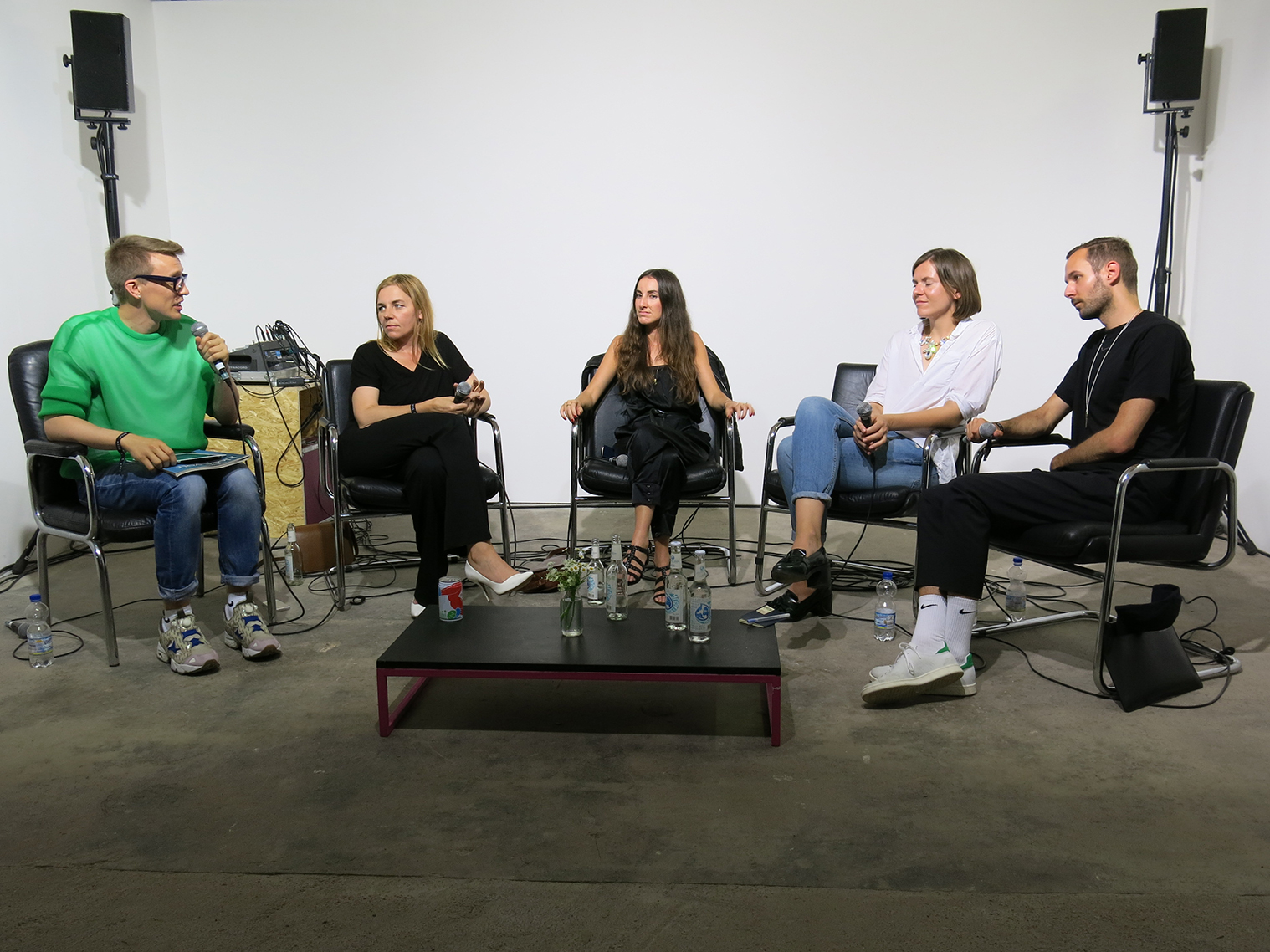
Johannes Reponen, Christiane Bördner, Mirna Funk, Mary Scherpe and Herbert Hofmann
Johannes Reponen: What do you think about the word ‘trend’? As everything seems so fragmented, are trends still relevant and do they even still exist?
Herbert Hofmann: To me, it means the impetus of the moment. As a buyer you need to think that there is money involved. It can happen that you don’t invest in a trend because you do not believe it will work and then it does – this really hurts. But if it is not happening and you have invested in a particular trend, then it is a problem because you have invested money on something that will stay in your stock forever. There are so many examples where we have been excited about a product because you see them whilst travelling around trade fairs and fashion weeks. But you cannot make a purchase based on what you see as popular during fashion weeks. The funny thing with trends is that sometimes, two years later, people come and they remember an item that was here two years ago and they ask for it, but that was a trend two years ago! And that is the point where you start selling it like crazy. When the brands see something that sells well, they fill up the market with that, to the point that it will become super-accessible everywhere and that’s the point when it is over. At Voo, we try to not to have too many trend-led things, but keep a consistency by mixing trendy items with good quality, timeless pieces – even if we find them boring.
Johannes Reponen: So for you, there are a lot of economic implications when it comes to trends.
Herbert Hofmann: Of course I think about what is in fashion but I am running around with the same clothes all year long. Some trends turn out to be long-lasting. You can find, for example, a pair of trousers, which are still in fashion after three years and nobody will think that they are old fashioned. It is good to see things like Birkenstock becoming fashionable again, because they are affordable and you do not need to spend crazy amounts of money for a pair of shoes that you can only wear three times.
Johannes Reponen: Christiane, how do you define what is relevant at the moment when you are putting I Love You magazine together and how does this influence the content?
Christiane Bördner: For me Birkenstock signify a trend at the moment, but for us, as an agency, we really think about what is going on in society; how communication has changed, what is moving luxury, or what is influencing the kids. For example, there are lots of women working in our office and the fridge is filled with different kinds of milk. Everyone has their own philosophy about drinking milk and so we decided to do our food issue exploring food habits, eating patterns and the whole health food movement – which is also a trend. The same for the ‘selfie’ theme issue, we thought about how communication has changed though the Internet and the social media. Everyone now has to promote themselves like a brand. Therefore we think a lot about what is going on in the world and that is how we come up with the topics we explore.
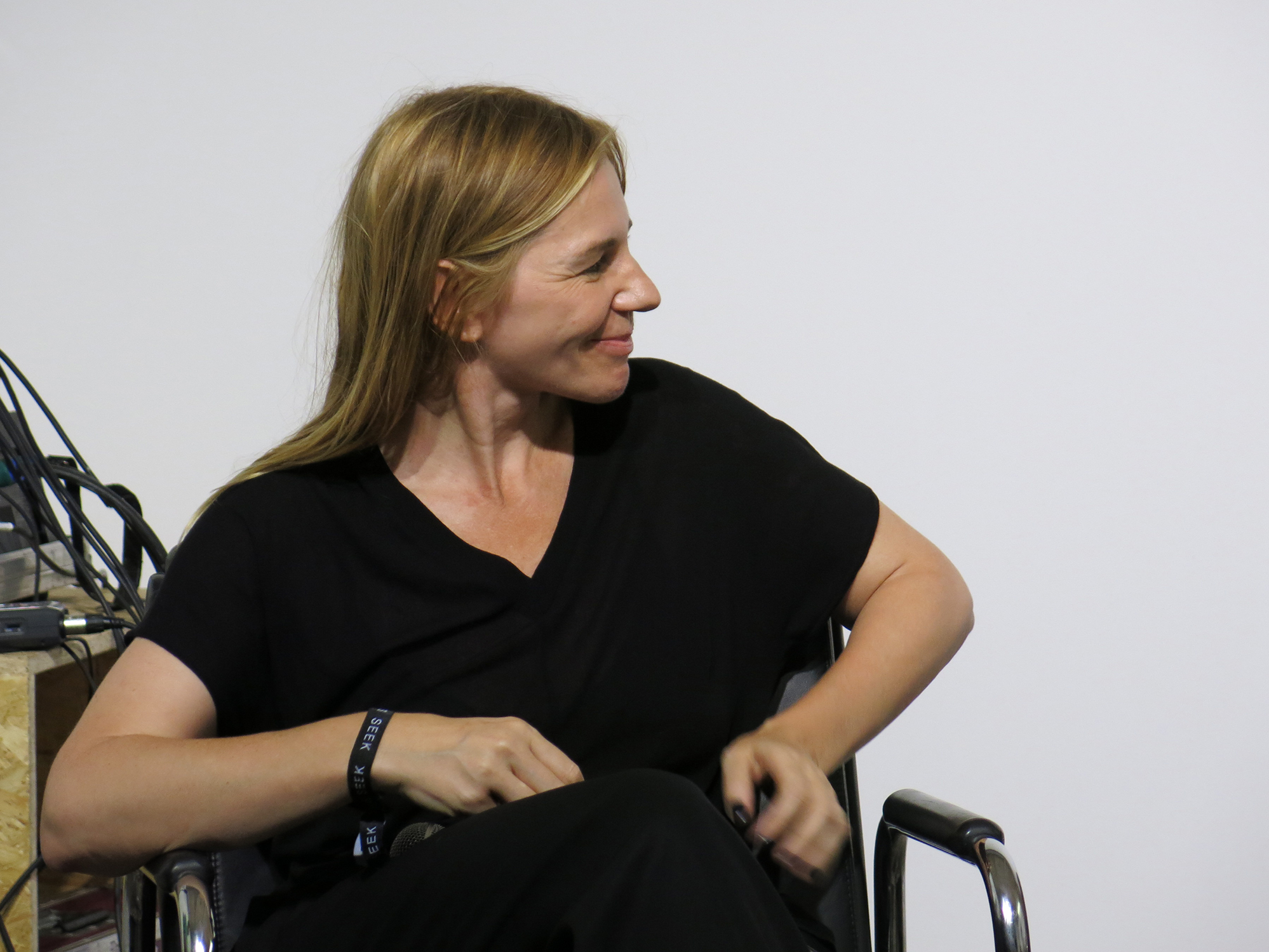
Christiane Bördner
Johannes Reponen: Mary, you are looking at the food cultures and I wonder how you relate this to the zeitgeist?
Mary Scherpe: Stil in Berlin started as a street style blog and then slowly ventured into food. The blog is also all about Berlin and fashion. For me the food scene is central and there are more creative, more motivated and more courageous things happening in food than in fashion right now in Berlin. This is why I am focusing on that. At the moment burgers are so outrageously popular and I have tons of people voting for the next best Berlin burger, which is a feature I do on the blog. But I always try to have a balance. Although I am not personally a great fan of burgers, I know people love them and it is the most popular feature on the blog. There are also other things like this little Chinese restaurant, which has been in business for twenty years and I still want to feature it because if I go just for the things that are most clicked, then it would just be about burgers. Coffee is kind of over.
Johannes Reponen: Where do all these kinds of movements come from then? Is it something to do with the zeitgeist, particularly as you said that ‘coffee is over’?
Mary Scherpe: It is a phase. When people start to do something with it, they open up new coffee shops and everybody is raving about it and you have to have all different kinds of coffee. Then people will accept it as being something normal and although it is still there, people are not excited about it anymore. We had other food trends in Berlin like the frozen yogurt, which has completely disappeared now. The same goes for Birkenstocks that are in fashion right now.
Herbert Hofmann: Think about how everybody positions themselves through social media: it is strange how you see the same pictures across different media platforms over and over again. I don’t understand how people like the same things. At Voo we try to stock products that fit with the feeling or lifestyle we want to support. We sell gay and lesbian books, magazines, as well as some vegetarian cookbooks. Supporting different movements through the products we choose, creates a community around our store. At Voo we don’t sell things just for the sake of selling but we choose products that we personally like and believe in. Coming back to the food trend Mary was discussing, in Berlin, food is very cheap and good quality. Also you don’t have to have fancy clothing in Berlin because nobody really cares about it. Therefore you can live all these lifestyles without spending much money. Still, as a shop, it is nice to present different items and meet new people – to show what you want to show and what you want other people to see. For me, fashion is not the most interesting thing that we present. Once we collected coats for the homeless and people were coming with huge bags full of clothes to make donations. It is nice to see that clothes can also help others and people are happy to get involved.
Johannes Reponen: Mirna, I want to ask you about Instagram because you are an expert in this area. Social media seems to be a real buzzword at the moment. The way that we use social media, at the moment, to communicate, whether through Instagram or Twitter; what does it say about the zeitgeist in your perspective?
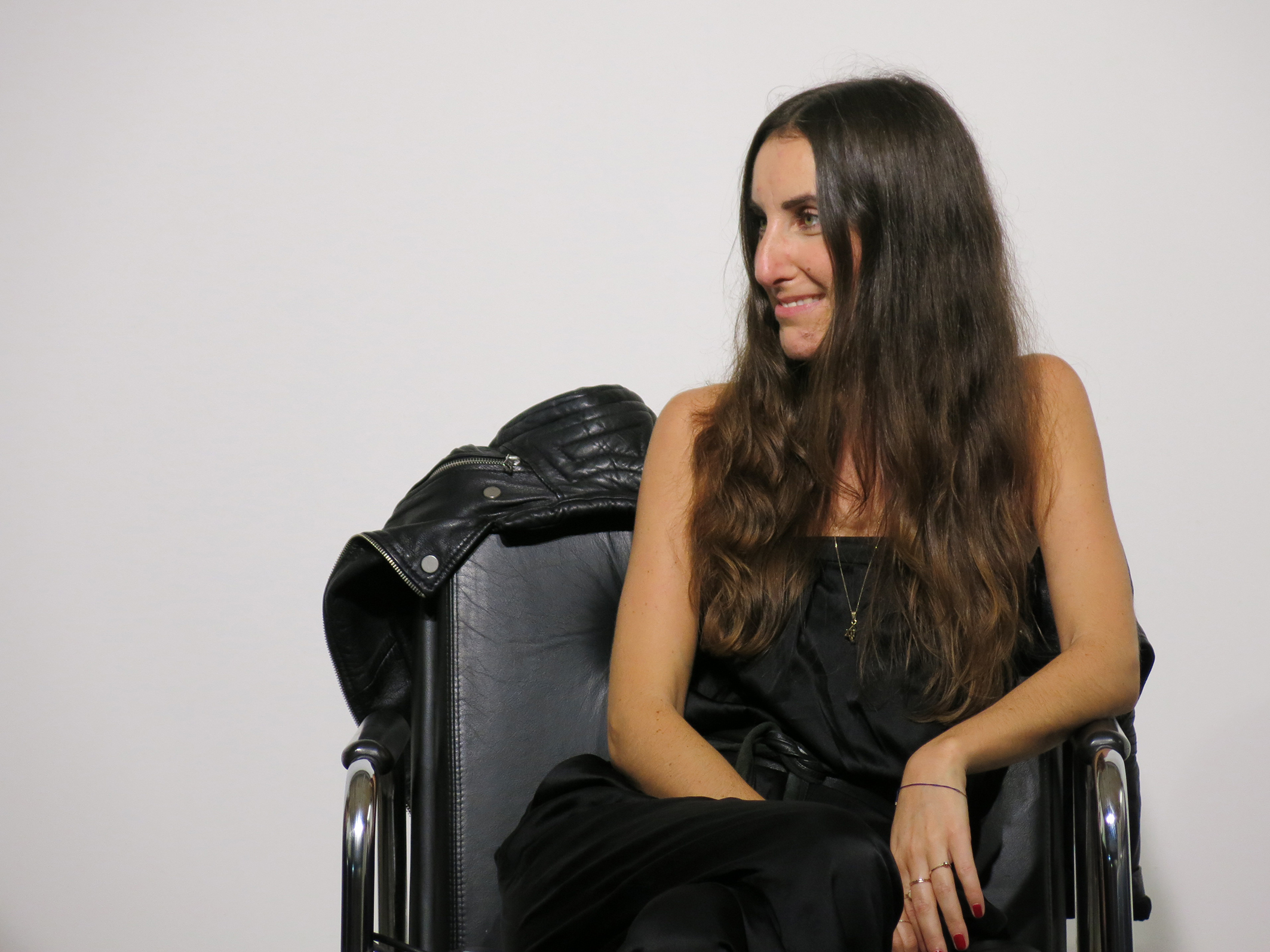
Mirna Funk
Mirna Funk: Trends develop in groups and it is always an answer to something. Trends bounce off each other because they are part of a dialectical play. Unlike twenty years ago, now everybody is connected and we can see what other people are doing. As a pattern of behavior it has always been like that, just right now we are able to compare each other with thousands of people around the world. Obviously this dialectical play gets faster and faster because of social media. In the last ten years, I have worked with mainstream companies like Nivea and it took them a long time to develop products, which they believe are trendy. It depends on how mindful the company is. Some companies are struggling to keep up because trends are emerging and change faster now. This is partly due to social media.
Christiane Bördner: As a business you cannot just discuss trends through a single item. You need to think about the bigger picture and not to follow what you feel right now. I know how Nike came up with this running shoes trend. They put on the market shoes that are perfect for running, but also can be styled with casualwear. There was a nice YouTube video a couple of years ago where one person would get up on a beach and start dancing and everybody would laugh at him. All of a sudden another man came up and started dancing, and after a while they were a little group and suddenly it was a movement and everybody was dancing. I think the video showed exactly how trends evolve. There is someone starting something, someone else joins in and then there is a tipping point where other people want to become part of it.
Mirna Funk: As soon as we say anything or we like something and we think that it has got deeper meaning, it gets commercialized and it looses its meaningful core. This is something that you have to be very careful with. It is the same when it comes to inspiration. You need to be careful and find the balance between commercialization and core values.
Mary Scherpe: The question of what is a trend is an integral part of my job. Defining the zeitgeist and unraveling the meaning behind it is an important tool for developing commercially successful products. What is important for me and maybe also for Herbert with the running of his store, is that it is not only about commerciality but also what is personally satisfying. In my position I can try to stay away from all the discussion on trends as much as possible because I decide what goes up on the blog. I could never reach certain standards, like delivering news as fast as an editorial office could. Therefore, I just focus on what I like and I enjoy the freedom.
Johannes Reponen: This concept goes to support the original idea I put forward that trends are disappearing as a concept and instead there are just a ton of ideas and solutions people want to explore.
Mary Scherpe: I definitely think that there are trends. There are even micro trends – Barbour, for example. And Birkenstocks are a trend for sure.
Mirna Funk: I think Zara created their copycat version of the Kenzo tiger sweater three months after it was originally shown, and that is when the trend is gone.
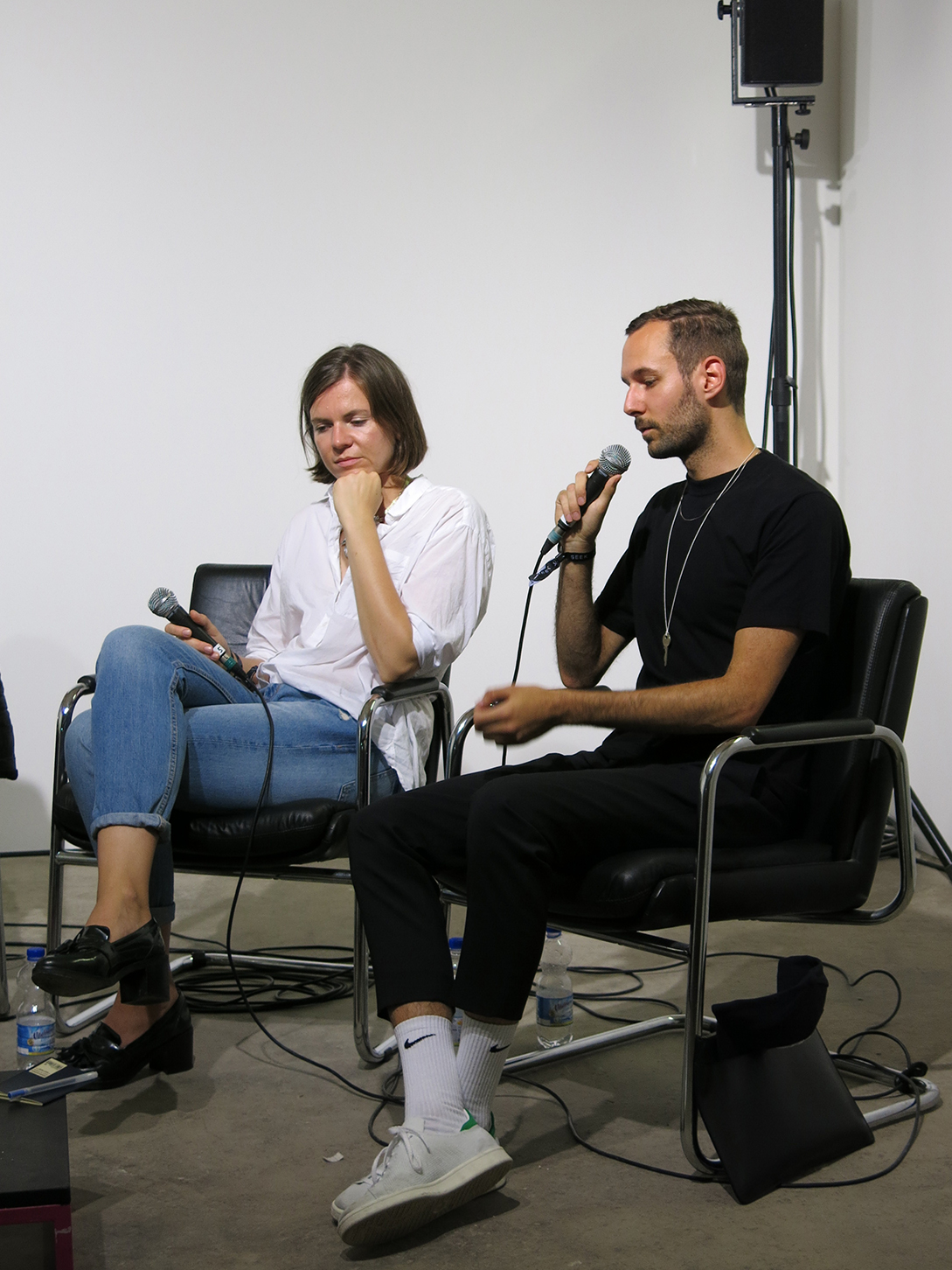
Mary Scherpe and Herbert Hofmann
Herbert Hofmann: This is also true by talking about the Birkenstock. Last season you could not find a pair anywhere and it was rare also to see them worn by people on the street. This season you can see them everywhere. You need to be really self-confidant, go for what you like and stay true to yourself. As a buyer it is true when you think about the product you want to buy. For example, when we go to the Nike showroom they usually have already made a selection of what they think is trendy. Most of the time some of the not-so trendy shoes are amazing as well and maybe even more durable. You should put them in the store, next to the most hyper-trendy ones and give to the customer the option of looking at both things. If it is a nice shoe it stays nice, no matter what.
Christiane Bördner: When Herbert said that he has the freedom of not to follow the mainstream market or to take decisions based on people’s requests – that is also something that we do. But that also gives me anxiety. I have a rare audience who is interested and loves what we write about but on the other hand there is also a downside. My business is personally rewarding, but it is not always commercially successful so I am often in between. Do I do what I think should be done or should I open up, change a bit and make some money. When I talk to big publishing houses, they blame me for not being consumer orientated enough. I think it is very hard to follow your guts.
Herbert Hofmann: I totally agree with that. For example, I recently went to the Paris trade shows and I saw some brands that are selling amazing products that perhaps won’t fit well with our concept, but I know a lot of people will buy. That is the dilemma: do you buy an amazing item that you don’t see anywhere else, or do you pick the ‘safe’ items, which you know will sell? You can go for the commerciality and perhaps you will have other companies asking you to collaborate together and make a lot of money. With Voo Store, we had this once. There was a company wanting to collaborate with us and as a result, we could have opened a second store but it wouldn’t have fitted at all with our philosophy. Consequently our customers’ could have felt betrayed by us because we were losing our integrity. It is a tough decision: to go for the money and the commerciality, or do what you like and feel good about.
Johannes Reponen: You are all in the business of selecting stuff: content, products and ideas. What kind of measuring tools are you using to deciding what is relevant? What are the things that you really value in products or ideas right now?
Christiane Bördner: Since we opened out business, we defined some core values and objectives. We always ask ourselves ‘would this topic fit into the magazine?’ and then we have a checklist and we compare the idea with our parameters. This goes also with partnerships.
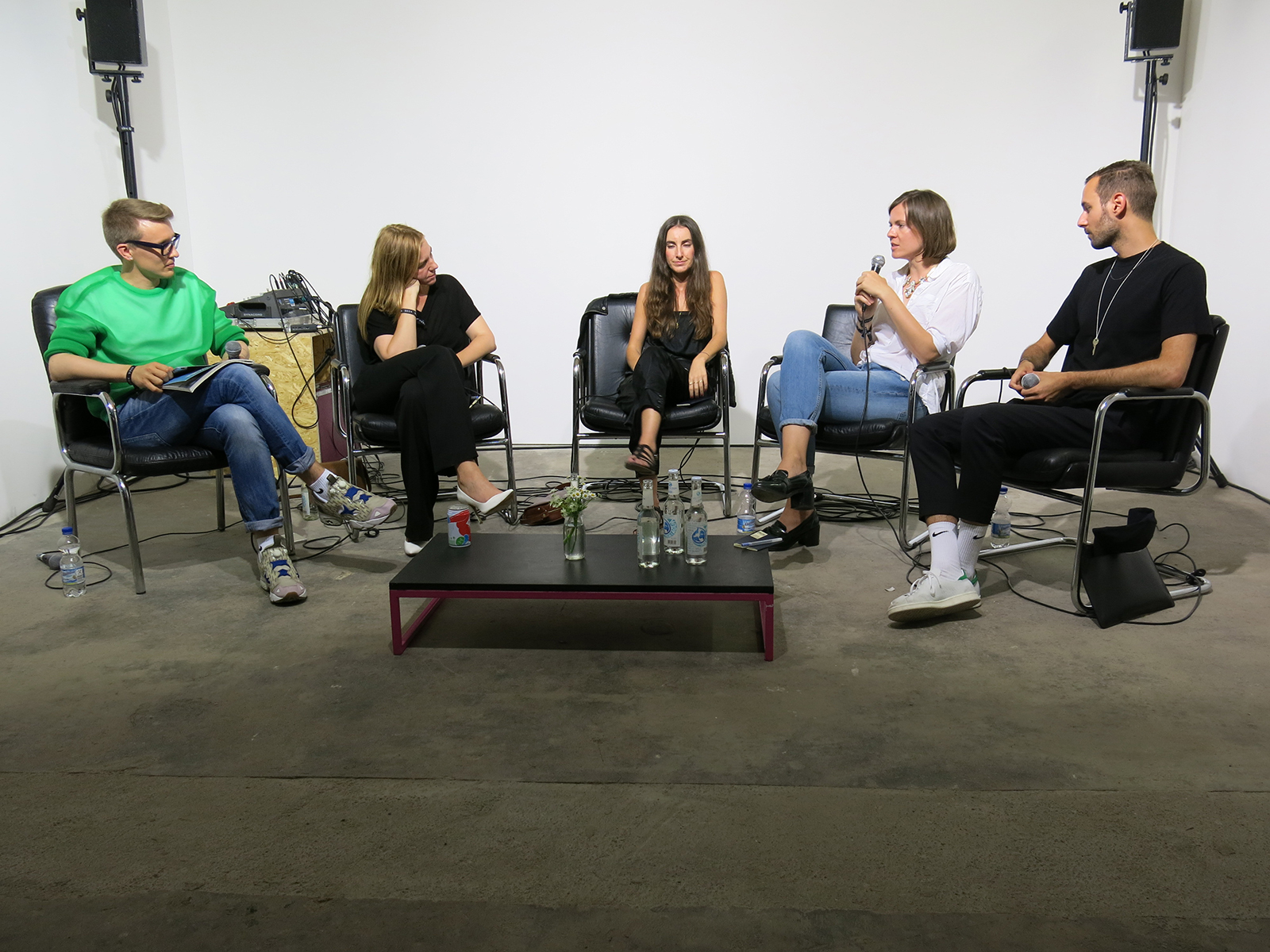
Johannes Reponen, Christiane Bördner, Mirna Funk, Mary Scherpe and Herbert Hofmann
Mary Scherpe: For me, intuition is the most important.
Johannes Reponen: What is the balance between feeling and knowing?
Christiane Bördner: For me, it’s eighty per cent feeling and twenty per cent knowing.
Mirna Funk: I read a lot of what is going on in society and culture. I keep myself informed. By consuming all this information and visual material as well, you can filter the core of what is going on. Intuition is a mixture between knowing what is going on and feeling or trying to understand what will happen and rethinking that. It is about rationalization.
Mary Scherpe: There is intuition in my business, but mostly I draw ideas from a selected and ever-changing circle of friends. I know the people very well and I know their strengths. For example I have this friend who talks a lot about art but if he gives me a suggestions for places to eat, they are usually not that great. I read many social media channels and websites and I really enjoy them, but sometimes you feel bombarded. I could spend my time by going to a lot of restaurant openings but I like to do things differently. In fact, I like to go to a restaurant after it has been open for a while in order not to fall for the newness of the place. I’m keen to hear what the other people tell me about it first. If it is good place, it will also be good in three months time.
Herbert Hofmann: I think for me aesthetics really matter. It is not just about how an item is presented, I need to believe in the product. As I said earlier, it hurts if the choices you make don’t work out. But after four years in the same business I think I have a good sense of things.
This discussion took place on the 9th July 2014 during SEEK spring summer 2015 and it has been edited and condensed by Daniela Amolini.

